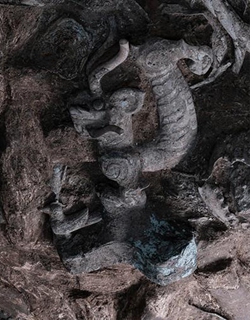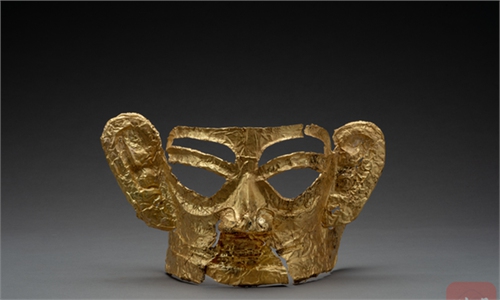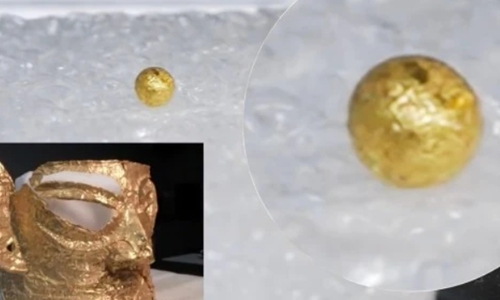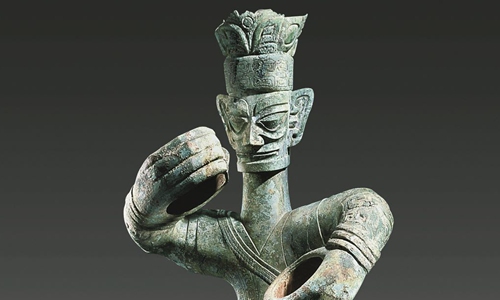ARTS / CULTURE & LEISURE
Sanxingdui relic wins Chinese netizens’ hearts as ‘Year of the Tiger mascot’

Photo: Sina Weibo
With the Chinese New Year fast approaching, many Chinese netizens have expressed their excitement about a new "Year of the Tiger mascot" - a bronze statue with a tiger head-shaped discovered in Southwest China's Sichuan Province at the well-known Sanxingdui Ruins, which are believed to be the remnants of the ancient Shu Kingdom that existed more than 2,000 years ago.Ran Honglin, head of the archaeological team at the Sanxingdui Ruins site, told the Global Times on Wednesday that this so-called bronze "mascot" was unearthed on December 26, 2021.
"The body is like a dragon, but its head looks like a tiger head, so many Chinese netizens are calling it a 'Year of the Tiger mascot,'" he said, noting that more research is needed to determine if tigers had some sort of special meaning in the Shu Kingdom .
Many Chinese netizens have asked the museum to make cultural products based on the relic to celebrate the upcoming Year of the Tiger.
"This is an auspicious discovery! The Sanxingdui Ruins are truly a treasure. I hope it can appear in the CCTV's Spring Festival Gala," a netizen commented on China's Twitter-like Sina Weibo.
At present, the relic is still being cleaned and excavated as a whole, and its overall size is not small, according to Ran.
The Sanxingdui Ruins have become one of the most eye-catching archaeological sites in China in recent years due to the number of unprecedented discoveries at the site including gold masks, a large bronze mask with a pair of bulging eyes and a bronze standing figure.
"The archaeological work at the Sanxingdui Ruins has achieved a great record in 2021. More than 2,000 relatively complete relics were unearthed during the year," he said, adding that the discovery of these artifacts has played an irreplaceable role in understanding the ancient Shu Kingdom and its important position in Chinese civilization.
The Sanxingdui site reveals the life of the people living in the ancient Shu Kingdom, including their food, clothing, housing and transportation. Archaeologists have concluded that the people of the ancient Shu Kingdom had many things in common with other ancient Chinese people such as rice, millet and silk, as well as the extensive use of pottery, buildings and city walls.
"In 2022, we will continue to excavate the No.7 and No.8 pits, and carry out the cleanup of the buried accumulations of the No.5 and No.6 pits indoors. It is hoped that we can have a preliminary understanding of the age, nature and formation of the six new pits, so as to promote the inheritance, protection and application of the ancient Shu Civilization," said Ran.




